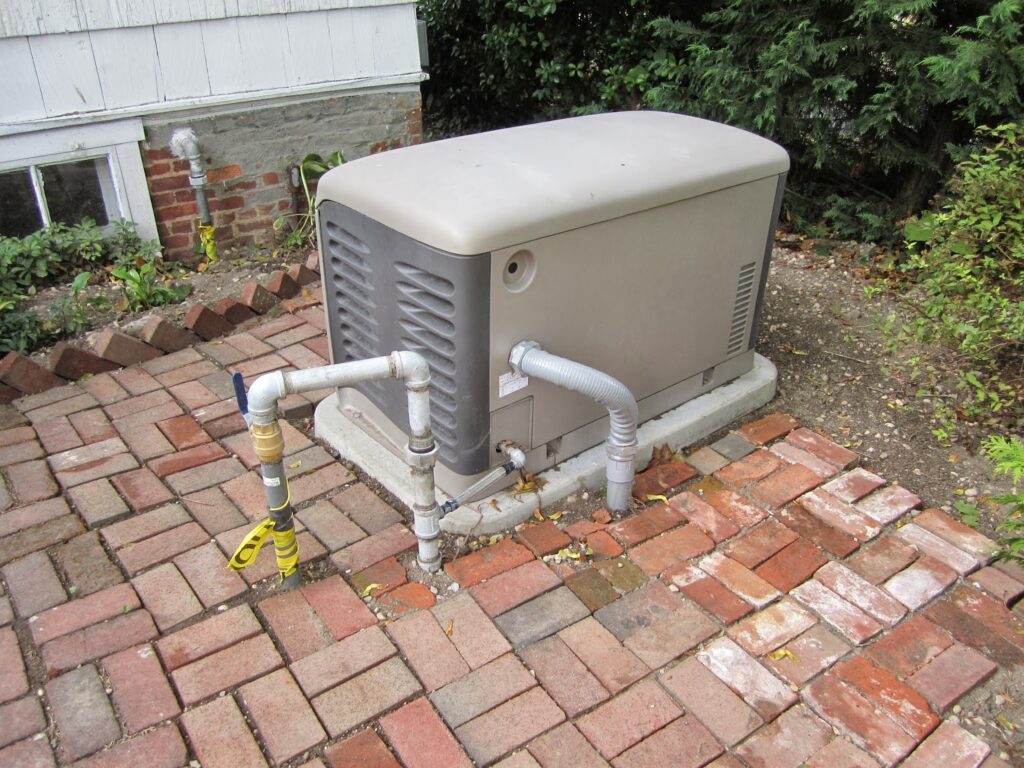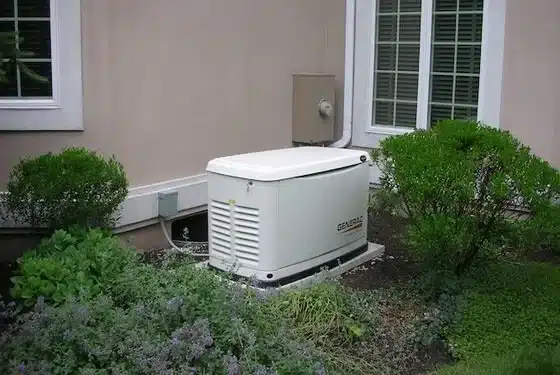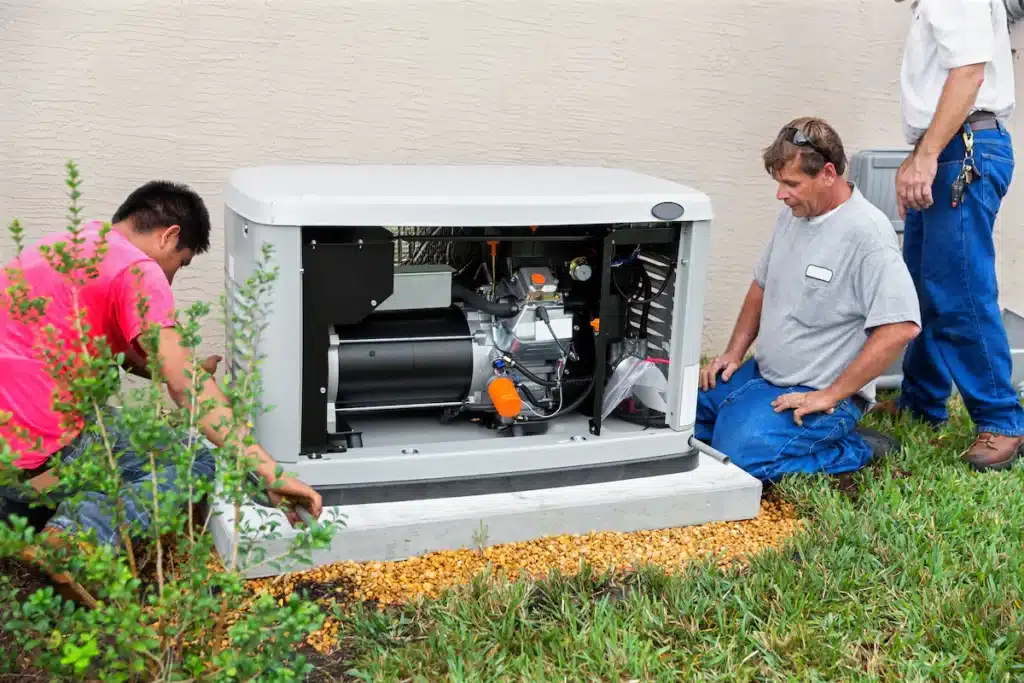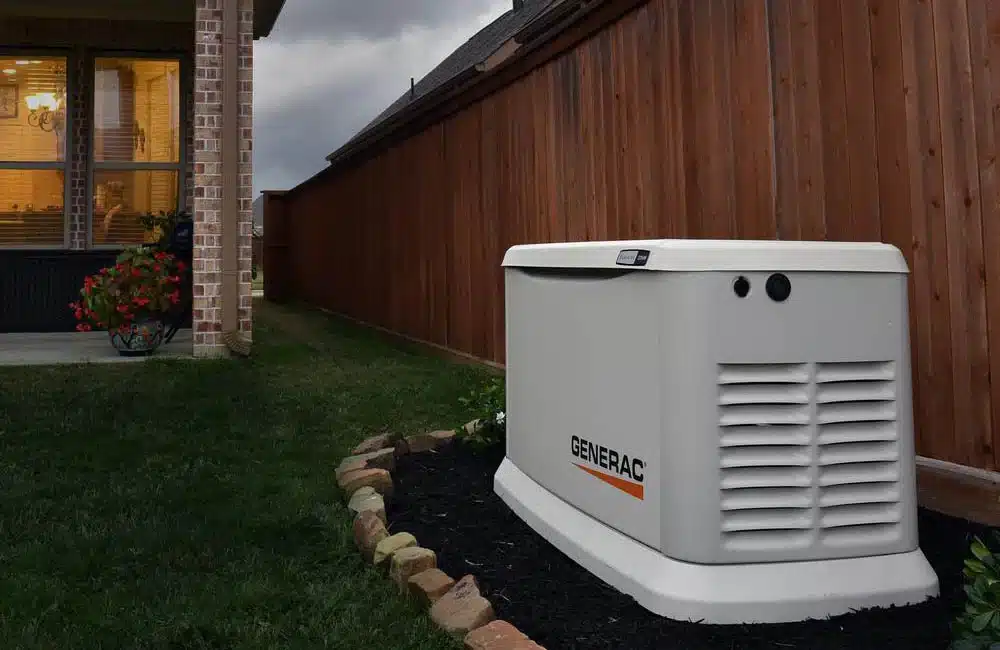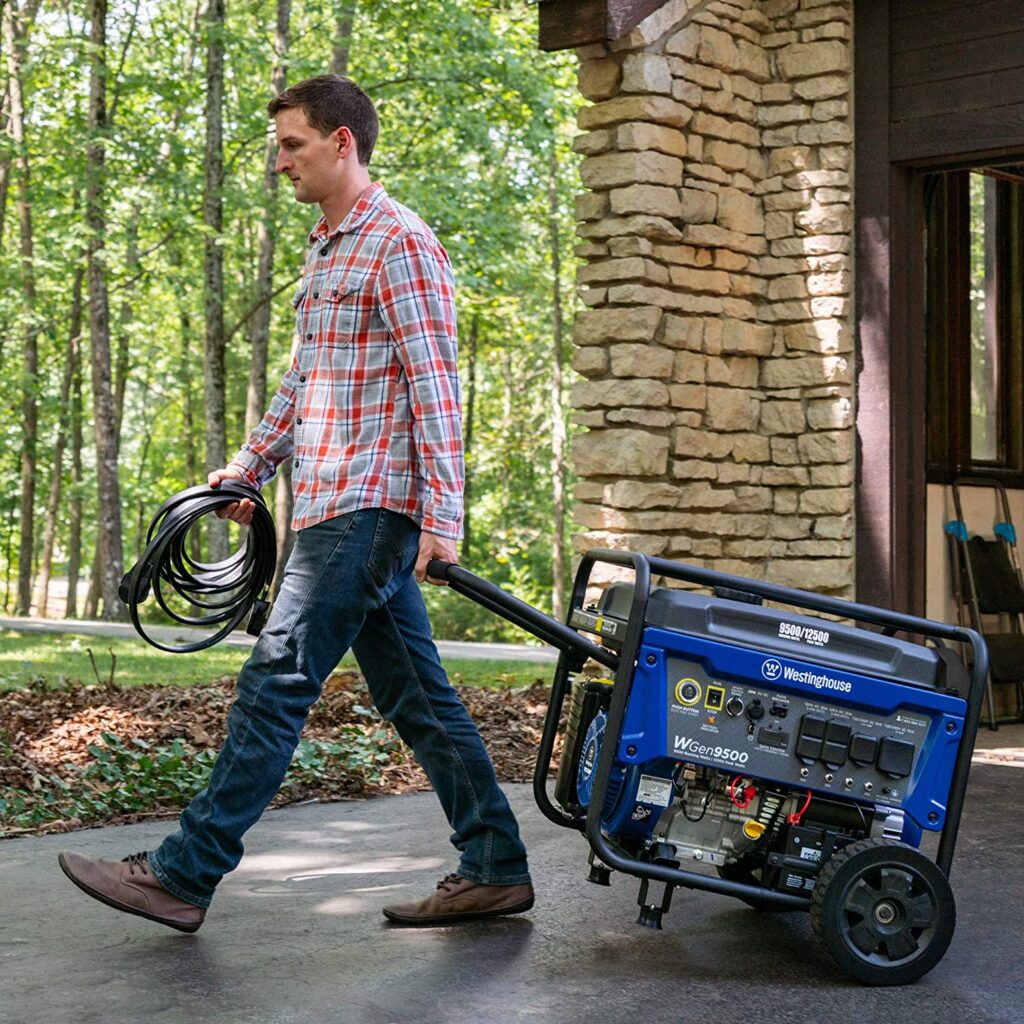Every home buzzes with energy, thanks to the intricate web of circuits and wiring hidden behind its walls, which connect to the electrical panel and power the entire house through various electrical work. The heartbeat of modern living is a safe and functional electrical setup, where volts and amps dance through service wires into the main service panel, distributing power to individual branch circuits through an overcurrent device. PVC conduit protects the service wires as they perform critical electrical work, carrying electricity through the wiring to each corner of our homes, ensuring that every room meets the family’s electrical services needs. From lighting up dark spaces to keeping your gadgets charged, residential electrical services form the unseen backbone of a house’s system—a critical section that demands respect and understanding for a harmonious home life. Ensuring proper grounding and using PVC conduit are essential for the safety of these services, while the right equipment maintains their efficiency and reliability.
Basics of Residential Electricity
Electricity, a must-have in modern homes, not only powers everything from lights to laptops but also relies on efficient electrical services. The electrical meter and electrical panel are central to managing this flow, while the electrode conductor ensures safe grounding. It’s crucial to understand the basics of electrical services, like volts and amps, and how safety devices within your electrical panel, such as circuit breakers, protect branch circuits through grounding.
Understanding the Basics
Electricity might seem like magic, but it’s all about the science behind electrical services, from the electrical panel to the wire and electrode conductor. Let’s break down the essentials of your electrical service: volts, amps, watts, ohms, and the role of the electrical panel. Understand the importance of the electrode conductor and ensure your wire specifications match your system’s requirements. These are the building blocks of electrical systems.
- Volts (V) measure electrical force or pressure.
- Amps (A) gauge current flow in the electrical panel; more amps mean more electricity buzzing through the wire, with the electrode maintaining the circuit’s integrity within the electrical service.
- Watts (W) tell us power usage in electrical service; higher watts equal more energy consumed, often requiring a higher amp wire and electrode.
- Ohms (Ω) indicate resistance in an electrode; fewer ohms mean electricity through the wire flows easier, requiring less amp from the electrical service.
Consider your home’s electric system, including the electrical service, as a water pipe. Just as a water pipe requires proper grounding to ensure safety, your home’s electrical setup needs secure grounding for protection. The service entrance conductors act like the main artery of water flow, while the disconnect functions similarly to a valve controlling the supply. Volts would be the water pressure, amps the amount of water flowing through, and ohms how narrow the pipe is, which in electrical service terms would correspond to the size of conductors, typically measured in AWG copper. Watts? That’s like measuring the size of your bathtub to determine how quickly you can fill it up, ensuring the amp rating matches the breaker on your panel.
AC vs DC
Ever heard of AC/DC outside of rock music? In electricity land, copper conductors carry the tunes, not a band, but two types of current: Alternating Current (AC) and Direct Current (DC), humming through the panel at various amps.
- AC powers most homes and businesses. It zigs-zags back and forth in the wires.
- DC is steadier, flowing in one direction—think batteries or solar panels—through conductors like copper, ensuring efficient bonding and stable amp delivery.
Your gadgets need AC from the service panel to charge up at home but switch it to DC internally because it’s simpler for small circuits, often using copper conductors. It’s like dancing different styles – at home you might boogie down with some fancy moves (AC), but inside your phone, it’s just nodding along to the beat (DC). Just as a panel manages the flow of dance rhythms, a breaker ensures the service isn’t overwhelmed, while bonding keeps the steps in sync.
Circuit Breaker Lowdown
Circuit breakers, acting as goalies in soccer, prevent trouble from scoring an own-goal on your house’s electrical panel by stopping fires or damage to appliances. They are essential conductors of safety in the service system, ensuring effective bonding to protect your home. They do this by:
- Monitoring electrical flow
- Cutting off power at the breaker panel when there’s too much juice—like flipping off conductors when someone overloads a service plug with too many gadgets.
Fuses are old-school circuit breakers in the electrical panel that burn out instead of tripping off to interrupt service. You have to replace them in the panel every time they blow, which can be a hassle compared to just flipping a service switch back on.
NEC Importance
The National Electrical Code (NEC) isn’t just another rulebook—it keeps you safe from shock or fire hazards by setting standards for residential electrical service installations.
Here’s why NEC matters:
- It sets guidelines for safe wiring methods.
- Inspectors use their service to check if your house is up-to-code before you move in or sell.
Following NEC service guidelines means sleeping soundly knowing your house won’t surprise you with an electric shockwave pajama party!
Assessing Home Electrical Capacity
Evaluating your home’s electrical system is crucial to ensure safety, service reliability, and efficiency. Signs of service overload, proper service labeling, and energy usage calculations are key components of this service assessment.
Evaluating Load Capacity
Your house is like a bucket but for electricity. It can only hold so much service before it starts to spill over. The capacity of your home’s electrical system service is measured in amps. Think of amps as the size of the bucket. Older homes might have a 60-amp service, but modern homes usually need at least 200 amps to run all those gadgets we can’t live without.
To figure out if your electrical service has enough juice, check the amp rating on your main circuit breaker. This service number tells you the maximum amount of electricity your home can handle safely.
Overloaded Circuit Signs
Have you ever had the lights flicker when you turn on the microwave service? That’s like your service panel at home saying “Help, I’m too full!” Here are some telltale signs that your electrical service circuits are overloaded.
- Flickering or dimming lights
- Breakers that trip repeatedly
- Outlets that feel warm to the touch
- A burning smell from outlets or switches
If these signs are recognizable, it’s time to enlist a professional service before your electrical bucket overflows and leads to severe complications.
Proper Panel Labeling
Imagine trying to find a friend’s apartment service without any room numbers. That’s what an unlabeled electrical panel is like. Knowing which switch controls what service is super important, especially in emergencies. Grab a label maker and start identifying each circuit in your panel:
- Lights in the kitchen
- Outlets in the living room
- Air conditioner unit
This simple step could save you loads of trouble down the road.
Appliance Energy Usage
Ever wonder how much it costs to run your fridge all year? Calculating appliance energy usage isn’t rocket science; here’s how you do it:
- Find out the wattage on the appliance label.
- Multiply watts by hours used per day.
- Convert this to kilowatt-hours (divide by 1000).
- Multiply by your electric rate (check your electric bill for this).
For example, if your TV uses 100 watts and runs for 5 hours daily:
100 watts x 5 hours = 500 watt-hours/day 500 watt-hours/day ÷ 1000 = 0.5 kWh/day 0.5 kWh/day x $0.12/kWh (electric rate) = $0.06/day
Small numbers, sure, but they add up!
Residential Electricians’ Service Types
Electricians are the go-to pros for installing and fixing our electrical needs. They ensure everything is up to code, and they’re ready at a moment’s notice when things go haywire.
Installation Services
Your home’s a complex web of wires. It’s got cables running through walls, hidden like secret tunnels. When you need new lights or sockets, electricians are the wizards who make it happen. They work with:
- Service wires that power your whole place
- Outlets and switches for all your gadgets
- Fancy fixtures to brighten up rooms
They’ll chat with the utility company too, making sure service entrance conductors are A-okay.
Repair Tasks Handled
Stuff breaks – it’s just life. But with electricity, you can’t just slap on some duct tape and call it good. That’s where electricians come in clutch. They tackle:
- Flickering lights that give off haunted house vibes
- Dead outlets that leave your phone gasping for juice
- Overloaded circuits that trip more than clumsy toddlers
They’re like healthcare pros for your home’s veins of voltage.
Inspection Services
Safety isn’t just a sticker on your helmet; it’s serious business at home too. Electricians poke around in crawl spaces and attics, eyes peeled for trouble before it starts. Inspections focus on:
- Making sure service conductors aren’t fraying like old jeans
- Checking breakers aren’t older than your grandpa’s dance moves
- Ensuring everything meets those big-deal code standards
It’s about keeping sparks in the fireplace, not behind your walls.
Emergency Response Ready
When things go south with electricity, there’s no time to chill and binge-watch shows. You need heroes who answer the bat signal ASAP—electricians are those heroes. They’re geared up for:
- Power outages darker than midnight without stars
- Sparks flying like a 4th of July gone wrong
- Scary burning smells where there shouldn’t be any
They dash over faster than you can say “blackout.”
In this electrified world we live in, these services aren’t just handy—they’re essential as pizza on game day. Whether you’re jazzing up your pad or keeping it safe from sparky disasters, residential electrical services have got you covered.
And remember how we talked about assessing home electrical capacity? Well, these services tie right into that—like checking if your system can handle another AC unit without throwing a tantrum.
So next time you flip a switch or plug in your charger, think about the squad of electrician gurus ready to keep things humming along smoothly.
Home Electrical System Maintenance
Keeping your home’s electrical system in tip-top shape is crucial. Regular maintenance can help prevent dangerous mishaps and costly repairs.
Routine Check-Ups
It’s like a health check for your house. Just as you’d visit the doctor, your home needs regular check-ups to keep it safe and sound. This isn’t just about flicking switches on and off. It’s about peering into the heart of your home’s electrical work to catch any sneaky issues before they become big problems.
- Inspect the electrical panel for signs of wear
- Listen for buzzing sounds from the circuit breakers
- Look out for any unusual smells near wiring
Dust Cleaning Safety
Dust bunnies aren’t just unsightly; they’re potential fire starters. A quick clean-up isn’t just about keeping things looking spick-and-span—it’s a matter of safety.
- Use a dry cloth to wipe away dust gently
- Avoid spraying cleaners directly onto electrical elements
Test Your GFCIs
GFCIs are like lifeguards at the pool—they’re there to save you from an electric shock when things go wrong. Testing them monthly is a no-brainer task that takes less than a minute but could make all the difference in an emergency.
- Push the “Test” button on the GFCI outlet
- Confirm that power cuts off
- Hit “Reset” to restore power
Tighten Outlet Covers
Loose outlet covers are more than an eyesore—they’re invitations for trouble, hiding potential electrical needs behind them. A simple twist of a screwdriver can secure them back into place, ensuring everything stays snug and safe.
- Check each cover plate in your entire house
- Tighten screws carefully without cracking the plate
Essential Electrical Know-how
Understanding what lies behind our walls powers our homes safely and efficiently. From ground rods to fuse boxes, knowing how these components interact is key.
- The main service panel directs electricity throughout your home
- Circuit breakers protect against overcurrent by tripping when overloaded
- Emergency disconnects provide a quick way to cut power during crises
Incorporating routine checks into your calendar ensures that all these parts function together seamlessly—like cogs in a well-oiled machine.
By staying vigilant with these simple tasks, you safeguard not only your family but also every gadget and gizmo plugged in under your roof. Plus, you’ll sleep better knowing that you’ve done everything possible to prevent an unwelcome spark or sizzle where it doesn’t belong.
Remember, while DIY maintenance can handle some minor tasks, always call in professionals for more complex electrical issues or if you’re unsure about anything related to wires or currents!
Upgrades and Installation Services
Your home’s electrical system is like the nervous system of your house. It needs to keep up with technology and your energy demands.
Panel Upgrades
Old panels can’t always handle today’s appliances. A panel upgrade ensures your system meets your current electricity needs. It could be about adding more amps to support a new HVAC system or just making sure that new gaming room doesn’t trip the breakers every other day.
- Increased capacity for renovations
- Support for high-energy devices
Upgrading helps avoid potential problems down the line. Think of it as future-proofing your pad for whatever tech comes next.
Surge Protectors Install
Voltage spikes are no joke—they can fry your gadgets in seconds. Installing surge protectors can save you from the heartache of losing your prized electronics. This isn’t just plugging in a power strip; we’re talking about a whole-home system that shields everything, from the fridge to the flat-screen.
- Protection against unpredictable spikes
- Safety for all household electronics
It’s like having a superhero guard your house against invisible enemies—those nasty surges won’t stand a chance.
Smart Home Automation
Imagine controlling lights, temperature, and security with a simple voice command or smartphone tap. That’s smart home automation for you! Integrating this into your electrical system isn’t just cool; it’s efficient.
- Convenience at its best
- Energy savings through optimized use
You’ll be living like The Jetsons before you know it, with everything at your fingertips—or voice!
LED Retrofitting
Still using old-school light bulbs? Time to switch to LED lighting! Retrofitting with LEDs means brighter spaces and smaller bills—it’s a win-win situation!
- Drastic reduction in energy consumption
- Long-lasting lights that rarely need replacing
LEDs are not just about saving money; they also give off better light which means no more dull corners in any room!
Solutions for Home Equipment Power
Getting your home equipment to run smoothly is essential. It’s all about safe power and smart energy management.
Dedicated Circuits Installation
High-energy appliances aren’t just power-hungry; they’re like the big kahunas of your electrical system. Your HVAC system and dryer? They need their own personal space, or in electrician speak, dedicated circuits. This isn’t just a fancy upgrade—it’s about safety and efficiency.
- Installing a dedicated circuit prevents overloading.
- It ensures high-energy appliances operate optimally.
Imagine plugging in that monster of a dryer without its own circuit. The lights flicker, the TV pauses – it’s chaos! A dedicated circuit keeps the peace by giving those big guys their own turf to play on.
Backup Power Solutions
Power outages are no joke—they turn your home into a scene from an old-timey movie where candles were the rage. Enter generators and battery systems, the superheroes of backup power solutions.
- Generators keep things running during extended outages.
- Battery systems offer quieter, more sustainable options.
Think about that freezer full of food you’ve stocked up—without backup power, it’s a countdown to an indoor barbecue you weren’t planning on having. With backup power, life goes on as usual: lights on, fridge humming, everyone happy.
Energy Management Tactics
Smart homes aren’t just cool; they’re clever with their energy too. Programmable thermostats and timers can make your home not just comfortable but also cost-effective.
- Thermostats save money by adjusting temperatures automatically.
- Timers ensure equipment only runs when needed.
It’s like having a tiny robot helper who turns down the heat when you’re snuggled in bed or makes sure your coffee is brewing right as you wake up—energy-saving ninjas for modern living!
Extension Cord Safety
Extension cords are lifesavers when you need power where there isn’t any. But they’re not all created equal—the right gauge and length matter more than you think.
- Heavy-duty cords handle more wattage for high-power devices.
- Shorter cords reduce tripping hazards and energy loss.
You wouldn’t use a straw to slurp up a milkshake—the same goes for extension cords and electricity. Pick one that can handle what you throw at it without turning into a fire-starting villain lurking in your living room.
Ensuring Electrical System Health
Your home’s electrical system is like the beating heart of your residence, pumping life into all your gadgets, appliances, and lighting. Just as you’d keep an eye on your health by scheduling regular check-ups, it’s crucial to monitor and maintain your home’s electrical well-being. Whether it’s through routine maintenance or considering an upgrade to handle more modern demands, staying proactive can save you from the headaches of unexpected power issues down the line.
Remember, keeping your electrical system in tip-top shape isn’t just about convenience; it’s a matter of safety for you and your loved ones. Don’t wait for the lights to flicker or the breakers to trip. Reach out to a trusted residential electrician today and give yourself peace of mind. Your home deserves nothing less than a clean bill of electrical health!


